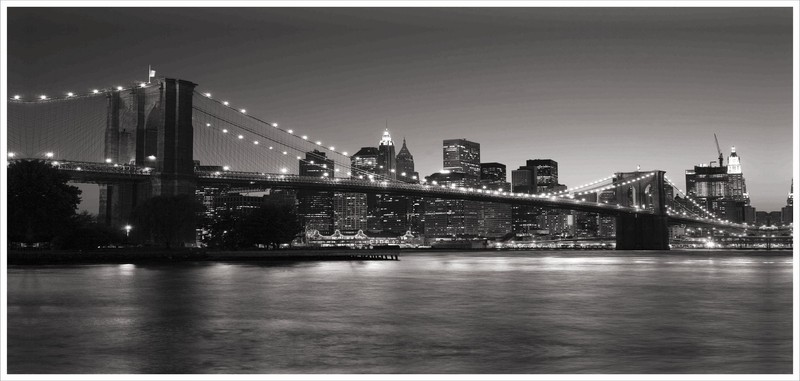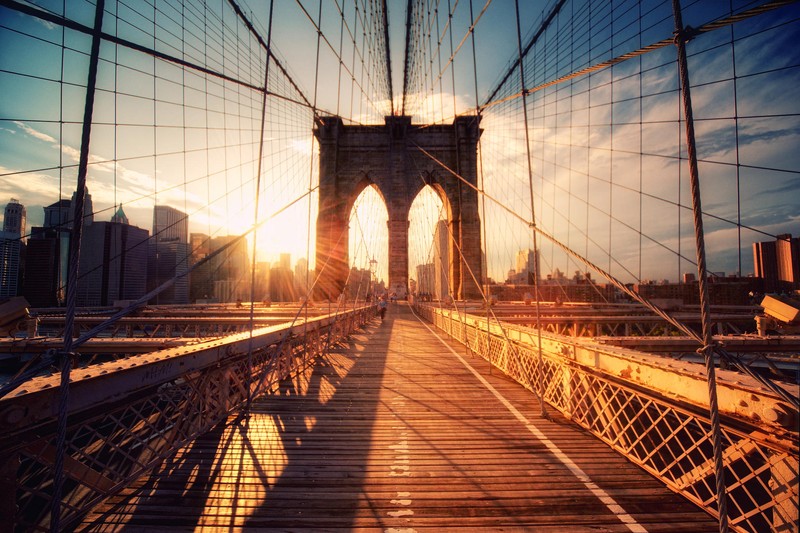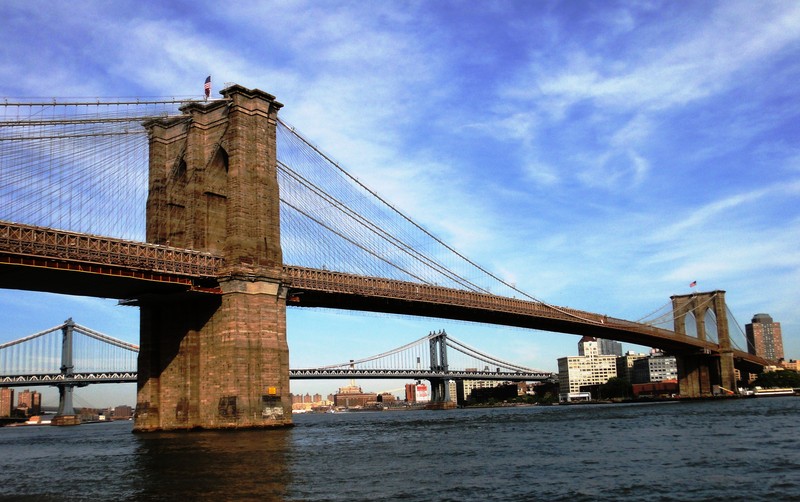Brooklyn Bridge
Introduction
Text-to-speech Audio
Images
Night

"Brooklyn Bridge Sunset" by Philipp Klinger

Afternoon

Backstory and Context
Text-to-speech Audio
The creator of the
Brooklyn Bridge was John Augustus Roebling. He was born in Germany, 1806. At
the age of 25, he immigrated to Pennsylvania. He settled in Harrisburg in order
to change his career from farmer to civil engineer. He promoted the use
of wire cable and established a wire cable factory. When he designed Brooklyn
Bridge to be a suspension bridge, he knew that suspension bridges are weak
against heavy winds and load. In order to strengthen and stabilize the bridge
against these influencing factors, he added a webbed truss on either side of
the bridge, which drastically increased its stability.
Before construction began, Roebling was injured, and three weeks later, he
died of tetanus. In order to continue his work, Washington A. Roebling, his
son, took over as chief engineer. He continued the works that his father
couldn't finish.
"Sandhogs" was another factor that increased the stability of the
Brooklyn Bridge. They were workers who cleared mud and boulders at the
bottom of the river. They were mostly immigrants who were paid about $2 an
hour. They used dynamite and shovels to destruct the mud as quickly
as possible. They had to work in terrible conditions. Working underwater
was not safe at that time, and to get to the bottom of the river, sandhogs used
airlocks, iron containers filled with compressed air. These containers allowed
workers to breath under water. However, the compressed air could create excess
amounts of gas in the workers’ bloodstreams. As a result, they often suffered
from symptoms known as "caisson disease,” or "the bends.” This
disease triggered such conditions as paralysis, numbness, and speech
impediments.
The Brooklyn Bridge was officially opened on May 24, 1883. President Chester A.
Arthur, the 21st president of the United States, officiated at this event
alongside New York Governor Grover Cleveland. In his honor, Washington Roebling’s
wife, Emily, was the first to ride across the Brooklyn Bridge. Within the first
24 hours of its opening, about 250,000 people walked across the
bridge.
While Brooklyn Bridge was open to the public, it was meant to help people move
freely between Manhattan and Brooklyn. However, people still had the idea
that suspension bridges were very weak, and so they didn’t trust the strength
and stability of the Brooklyn Bridge. People slowly stopped crossing the
Brooklyn Bridge.
In order to prove that Brooklyn Bridge was safe against heavy winds and
loads, on May 17, 1884, P. T. Barnum led 21 elephants over the Brooklyn Bridge
to prove its stability. This performance successfully convinced people to once
again use the bridge without fear of its collapsing. Today, this bridge carries
150,000 vehicles and pedestrians daily.
Sources
"Infrastructure." NYC DOT - Brooklyn Bridge. Accessed April 07, 2017. http://www.nyc.gov/html/dot/html/infrastructure/brooklyn-bridge.shtml.
